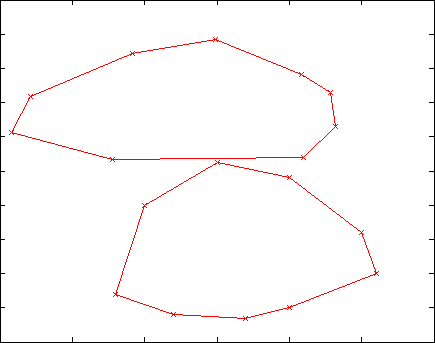Results
In our simulation, we start with two particles with standard values for mobility at 1 and free energy densities at 1 and 1.03, in order to produce a relatively regular result. The particles then evolve naturally until they come into contact, at which point the intersection evaluation code is run. At each time step, the particles are evaluated to determine if there is an intersection. Once the particles have intersected and are merged by the intersection code, the larger particle evolves according to the sam parameters as the individual particles.

In this simulation, everything works properly except for one point, highlighted in green after the intersection, which evolves in the wrong direction. This is a problem that would have to be solved in order for the code to be useful for actual modeling. If this point were working properly, and the time was allowed to continue indefinitely, the particles should eventually coalesce into one large circle.
Code Files
